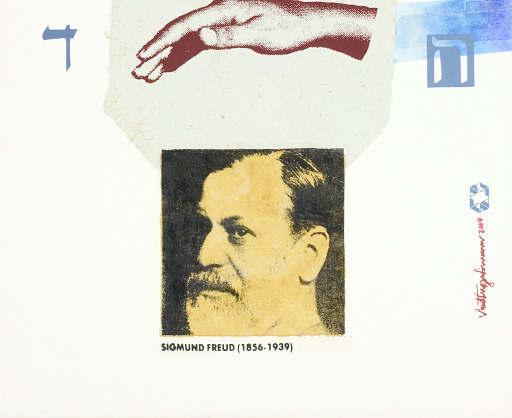The Sacred Illegality of Ruth
A translation proposal and relations with Shavuot
DOI:
https://doi.org/10.35699/1982-3053.2024.51933Keywords:
Shavuot, Hebrew Bible, Commented TranslationAbstract
This article aims to discuss the interpretative possibilities that the reading of Megillat Ruth can assume as an intrinsic part of the Shavuot festival. Based on an original translation with comments produced by the authors, a literary analysis is proposed that explores the controversial interpretations of the ambiguities of the characters and plots given the dual character of the Shavuot festival: with pre-second temple agricultural relations; and with the relationship to the giving of the Torah post second temple.
Downloads
References
ALTER, Robert. Arte da narrativa bíblica. São Paulo: Companhia das Letras, 2007.
ALTER, Robert. The Hebrew Bible: A Translation with Commentary: Writings. W.W. Norton & Company, 2018. ANZI, Achia. Migration, exile, and homecoming in the book of Ruth. Open Theology, v. 7, n. 1, p. 514-530, 2021. BÍBLIA HEBRAICA STUTTGARTENSIA. Deutsche Bibelgesellschaft, 1997.
DAVIDSON, Benjamin. The Analytical Hebrew and Chaldee Lexicon. 15ª ed. Peabody: Hendrickson Publishers, 2014. FERREIRA, C. A. P. Livro de Ruth: a narrativa refletindo as questões da mulher e as medidas socioprotetivas. Teoliteraria:- Revista de Literaturas e Teologias, v. 10, n. 22, p. 539–577, 2020. disponível em: https://doi.org/10.23925/2236-9937.2020v22p539-577 HARRIS, R. Laird; ARCHER, Gleason L.; WALTKE, Bruce K. Dicionário internacional de Teologia do Antigo Testamento. Tradução de Márcio Loureiro Redondo, Luiz Alberto Sayão, Carlos Osvaldo Pinto. São Paulo: Vida Nova, 1998.
JACHTER, Rabbi Chaim. From Chaos to Kingship: An In-Depth Exploration of Megillat Rut. New Jersey: Torah Academy of Bergen County, 2022. JACKSON, Bernard S. Law and Narrative in the Book of Ruth: A Syntagmatic Reading. SSRN, 2016. Disponível em: http://dx.doi.org/10.2139/ssrn.2892196
KOEHLER, Ludwig; BAUMGARTNER, Walter. The Hebrew and Aramaic Lexicon of the Old Testament. Leiden: Brill, 2000.
LARONDELLE, Hans K. Nosso Criador Redentor: uma introdução à teologia bíblica da aliança. São Paulo: Editora TMR, 2016.
LINAFELT, T. Narrative and Poetic Art in the Book of Ruth. Interpretation: A Journal of Bible and Theology, v. 64, p. 117–129, 2010. Disponível em: https://doi.org/10.1177/002096431006400202
MIDRASH. Sefaria. Disponível em: < https://www.sefaria.org/texts/Midrash >. Acesso em: 20 mar. 2024. NUNES JR., Edson M.; GRUBER, Gabriel D. Uma Análise Narrativa de Juízes 3:12-30. Vértices, n. 21, 2019. Disponível em: https://doi.org/10.11606/issn.2179-5894.i21p1-15 OZ, Amós; OZ-SALZBERGER, Fania. Os judeus e as palavras. São Paulo: Editora Companhia das Letras, 2015.
SCHÖKEL, Luís Alonso. Dicionário Bíblico Hebraico-Português. 6ª ed. São Paulo: Paulus, 2014.
SOUTHWOOD, K. E. Will Naomi’s Nation be Ruth’s Nation?: Ethnic Translation as a Metaphor for Ruth’s Assimilation within Judah. Humanities, 3, p. 102-131, 2014. Disponível em: https://doi.org/10.3390/h3020102
STEINSALTZ, Rabbi Adin Even-Israel. Ruth Megillat. Jerusalém: KOREN. 2019. Disponível em: https://www.steinsaltz- center.org.il/vault/MegillatRuth/Ruth_English.pdf. Acesso em: 14 mar. 2024.
TANAKH. Sefaria. Disponível em: < https://www.sefaria.org/texts/Tanakh >. Acesso em: 20 de Março de 2024.
TURNER, Laurence. Anúncios de Enredo em Gênesis. São Paulo: Editora TMR, 2017.
Downloads
Published
How to Cite
Issue
Section
License
Copyright (c) 2024 Arquivo Maaravi: Revista Digital de Estudos Judaicos da UFMG

This work is licensed under a Creative Commons Attribution 4.0 International License.
Os direitos autorais pertencem exclusivamente aos autores. Os direitos de licenciamento utilizados pelo periódico é a licença Creative Commons Attribution 4.0 (CC BY 4.0): são permitidos o compartilhamento (cópia e distribuição do material em qualquer meio ou formato) e adaptação (remix, transformação e criação de material a partir do conteúdo assim licenciado para quaisquer fins, inclusive comerciais.






